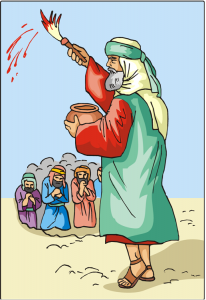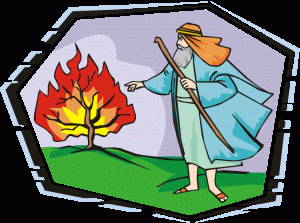 Moses’s bringing the children of Israel into a covenantal (marriage) agreement with YHVH at the foot of Mount Sinai contains powerful prophetic symbolism that applies to us now. Point-by-point, it foretold the steps that Yeshua would take through his death on the cross as he brought the spiritually lost (you and me) into a covenantal (marital) relationship with him.
Moses’s bringing the children of Israel into a covenantal (marriage) agreement with YHVH at the foot of Mount Sinai contains powerful prophetic symbolism that applies to us now. Point-by-point, it foretold the steps that Yeshua would take through his death on the cross as he brought the spiritually lost (you and me) into a covenantal (marital) relationship with him.
Exodus 24:6, Moses sprinkled half the blood of a sacrificed animal on the altar, which prophetically pointed to Yeshua shedding his blood on the cross, so that we might enter into a covenantal relationship with YHVH. The wine Yeshua drank at the last supper that ratified the Renewed Covenant signified the blood he was about to shed at the cross (Matt 26:26–28). When we as redeemed believers drink the third cup (i.e., communion) of the Passover Seder and eat the bread, we are signifying our marital commitment to YHVH-Yeshua. We are accepting the terms (our marriage agreement or ketubah) of the covenant—the Renewed Covenant, which includes the Torah being written on our hearts by the Spirit of Elohim (Jer 33:31–33; Heb 8:8–10).

Exodus 24:7, Israel agreed to the terms of the ketubah the third time (see also Exod 19:8 and 24:3). As Israel pledged loyalty and obedience to YHVH, even so, we also must confess with our mouths and believe in our hearts that Yeshua was raised from the dead, and then walk in righteousness, which is obedience to the Torah (Rom 10:9–13; Ps 119:172).
Exodus 24:8, Moses sprinkled the blood of an innocent animal over the people, which is a prophetic picture of Yeshua shedding his blood at the cross for the redemption of sinners from the penalty of sin, so that they might enter in a sinless state into a covenantal relationship with YHVH (Heb 9:18–22).
Exodus 24:9–12, Only after the blood of the sacrificed animal was shed and sprinkled over the people were the elders permitted access into the Presence of Elohim. Only through the shed blood of Yeshua and through the veil of his flesh are we able to come boldly to Elohim’s throne of grace (Heb 10:19–20; 4:16).





